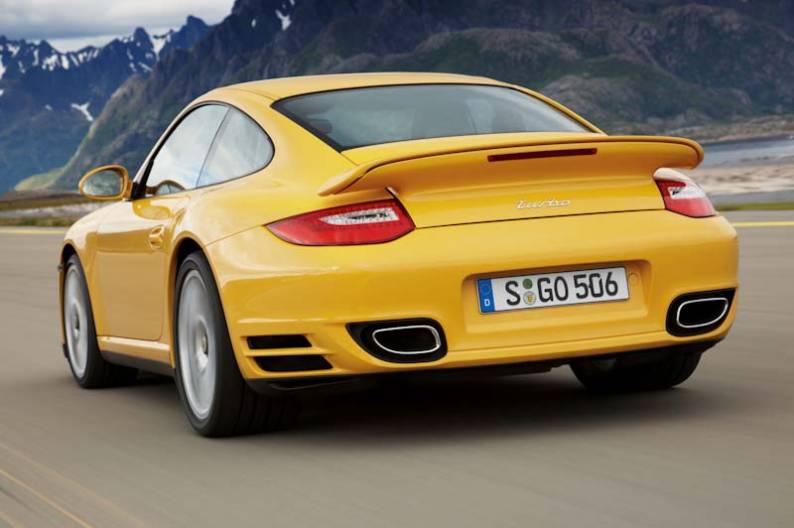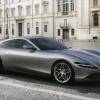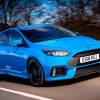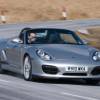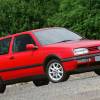
RAC sale – up to 33% off*
• Roadside cover from £5.29 a month†
• We get to most breakdowns in 60 mins or less
• Our patrols fix 4/5 breakdowns on the spot

By Andy Enright
Introduction
The Porsche 911 needs little in the way of introduction and the signature model of the road car line has, since 1975, been the Turbo. When it first appeared, the 911 Turbo was something to be feared. Drivers clung on to this fearsome thing, its 258bhp making it one of the quickest production cars on sale. Each successive generation saw the 911 Turbo become more powerful and better resolved. By the time the water-cooled '996' generation car appeared in 1999, the Turbo had become genuinely civilised; rocket ship fast but civilised nonetheless. The car we look at here is that car's successor and tracking down a good used example shouldn't prove too difficult.
Models
2dr coupe, 2dr cabriolet (3.6, 3.8 petrol [S])
History
The '997' generation 911 was an evolution of the 996 with many changes designed to improve quality while retaining that car's winning blend of performance and usability. Although the 911 Carrera models appeared in 2004, it wasn't until 2006 that we got the Turbo version. First shown at that year's Geneva Show, it was initially offered as a coupe and the specification wasn't any great surprise. The Mezger 3.6-litre race-derived engine continued, drive went to all four wheels but power had crept up to 475bhp thanks largely to a pair of clever Borg Warner variable geometry turbochargers - a first for Porsche. The following year saw the debut of the 911 Turbo Cabriolet, with the first examples rolling out of dealers in September 2007.
A key date to remember when dealing with this 997 generation Turbo is September 2009. This is when a heavily revised version of the 997 was announced at the Frankfurt Show. Dubbed the '997.2' by Porschephiles, this revised Turbo featured a bigger, more powerful 3.8-litre engine good for 495bhp. A seven-speed PDK twin-clutch sequential transmission replaced the old Tiptronic automatic if you didn't fancy the standard six-speed manual 'box. Believed by many to be a response to the superiority of Nissan's GT-R over the original 997 Turbo coupe, the 997.2 was seriously potent, even more so if you chose the car that arrived in 2010, the Turbo S. With 525bhp and 700Nm of torque and fitted with a launch control system, this was a car that wasn't about to wilt in the face of Japanese opposition. The 997.2-generation 911 Turbo continued to sell well even right through to the announcement of its replacement, the 991-generation 911 Turbo, in May 2013.
What You Get
Bodystyle choice lies between this Coupe or the even more exclusive Cabriolet (no glass-roofed Targa option sadly) but either way, the 911 Turbo is a desirable car. Choose the 997.2 model and you'll benefit from a weight loss plan, the cars shedding up to 50kg as part of the improvement process, bringing the weight down to 1570kg in manual Coupe guise. The fabric-topped Cabriolet is actually only around 85kg heavier, one reason why there's virtually no performance penalty over the fixed head version. Soft top buyers don't even suffer in terms of luggage space, given that the boot is in the front. Not that there is much. With just 105-litres on offer, you'd do well to pay extra for the bespoke Porsche luggage kit so that you can make the most of it.
Inside, though it doesn't have the vodka-bar chic of a Maserati or the Old Spice machismo of an Aston Martin, the interior is as classy as the exterior lines would suggest, if a little subdued for a car bearing a six figure price tag. The PCM Porsche Communication Management system dominates the fascia with its 6.5” colour screen display. It bundles satellite navigation together with the audio system and even an optional TV tuner. The front seats are large comfortable items that still sit you low to the ground but new model buyers had the choice of various more sporty seat options depending on how racy they wanted to feel. If like most buyers, you're looking for an automatic gearbox, you'll prefer PDK to Tiptronic if you want to feel the involvement of shifting gears yourself.
What You Pay
Please fill in the form here for an exact up-to-date information.
What to Look For
There are a few things to look for with 997 Turbos. If you're buying a manual car, get a specialist to pull the diagnostic data to check for over-rev readings and any other anomalies. Check the font radiators for stone damage as this is a costly fix. Some diligent owners reinforce the front grilles in order to prevent this. Spark plug servicing is every four years and is sometimes overlooked. An official Porsche Warranty is hugely desirable and can be continued if it's already in place. Check the condition of brake pads and discs on cars with carbon ceramic brakes. Many owners avoid the expense of replacements by exchanging them back to steel discs, so the yellow calipers that signify those ceramic PCCB brakes might not be quite what they seem. Check the hood on the Cabriolet for discolouration from bird lime.
Replacement Parts
(approx based on a 2011 911 Turbo) A central radiator will set you back around £400 if a stone fires through it, while front left and right rads are around £350 each. A full set of carbon ceramic brake discs and pads cost the best part of £15,000 from Porsche, which is why many owners switch to Alcon steel replacements if they're worn. They'll usually only become worn through enthusiastic track use though.
On the Road
When Porsche introduced the first 997-generation Turbo, most thought the thing utterly brilliant, but there were the odd gripes about driver involvement. Put simply, the massively powerful engine could so dominate the driving experience that that just occasionally, some of the crucial interactivity that 911s are so famous for sometimes felt as if it was being lost. The championing of the normally-aspirated GT3 as the 911 that serious drivers chose was beginning to give the Turbo the air of a very quick grand touring car rather than 'the best sports car in the world' - a title that was routinely bestowed on the car's predecessor, the 996-generation 911 Turbo. The challenge from the freakishly talented and inordinately inexpensive Nissan GT-R only served to underscore the issue.
Remedial action came in the shape of the 997.2 Turbo launched in 2009. It got a very different 3.8-litre unit, still a flat-six but with high pressure direct injection, larger intercoolers for the twin turbos and a whole host of other little tweaks to boost power up to 495bhp, 20 braked horses more than before. Go for the Turbo S variant that most customers chose and the figure rises to 523bhp, though to be honest, a less expensive way of matching its pace would simply be to find a standard model specified with the optional 'Sport Chrono' pack which delivered an overboost facility that increases torque from 650 to a shattering 700Nm for up to ten seconds at a time. That pack also included the addictive 'Launch Control' function.
It all means ballistic performance, delivered as the turbos reach temperatures of up to 1,000-degrees C, with an angry gargling, whooshing soundtrack from the engine just over your shoulder that's mixed with a muted pschtt as you lift off in-between gears. Sixty from rest, courtesy of the PTM Porsche Traction Management system, is demolished in anything between 3.3 and 3.7s, depending on your choice between Turbo and Turbo S, Coupe or Cabriolet, manual or PDK twin-clutch 7-speed semi-automatic gearbox, another fresh addition to the improved post-2009 model. Top speed is around 193mph, something you'll probably only be able to really experience somewhere like the Nurburgring Nordschleife racetrack where apparently, this car was rated as being 10s a lap quicker than its 3.6-litre predecessor. Quicker too than the Porsche 959 supercar that was the fastest thing on earth back in the 80's and '90's: even the legendary Mclaren F1 goes no faster.
All very nice, but as we've already suggested, lack of power was never a problem for this car in the first place. Tactile driver involvement was always the issue. Purists will always tell you that less is more in that respect. But perhaps a few purists need to drive this car if that's what they really think. It proved to be a genuine step forward in this respect. With this model, Porsche actually dialled back the turbo boost pressure a touch for extra driveability and keener throttle response. Then there were the revised engine mounts that came with the Sports Chrono pack to improve chassis tautness. But most important of all were the changes to the ride. Tweaks to the spring and damper rates meant this car's whole attitude to bumps and ripples, grooves and ridges became more forgiving: it works with you - which is always nice when you've 500bhp straining to be let off the leash.
Just as well then that you've still four driven wheels to transmit all of that to the tarmac (something when this car was new, owners of the equivalent 911 GT2 paid around £23,000 more to do without), but it's a system that, though further honed, this car is less reliant upon than some of its predecessors. One key reason is the box many new model buyers ticked for the optional torque vectoring system that automatically brakes the inside rear wheel during hard cornering, giving the car an impressively direct willingness to turn-in. And it really works. On a wet road in a car with this feature fitted, you can really feel it tucking the rear in neatly and helping to bring the nose around. Further assistance comes from the industry-leading PSM Porsche Stability Management system which will automatically rein in the car should you step a little over the limit. Should you select either 'Sport' or 'Sport Plus' suspension options (both a little stiff for normal road driving), PSM will offer more leeway before cutting in.
Overall
Finding a well looked after 997-generation 911 Turbo shouldn't be difficult. Despite some fairly steep depreciation, they're still priced in a bracket where only the well-heeled can afford them and, indeed, afford to run them. The 997.1 is a great machine but the 997.2 Turbo from late 2009 is truly excellent and is the car that we knew Porsche was capable of. Our pick would be a 997.2 Turbo with Sport Chrono and the PDK twin-clutch gearbox.

